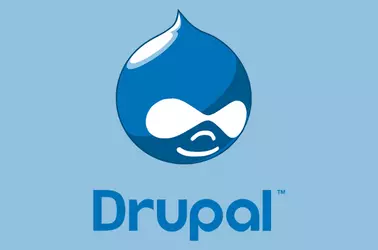To change the URL of a Drupal website, edit the file
sites/default/settings.php
Find the line
$base_url = 'https://www.your-current-domain'; // NO trailing slash!
Replace your old domain name with your new domain name.

To change the URL of a Drupal website, edit the file
sites/default/settings.php
Find the line
$base_url = 'https://www.your-current-domain'; // NO trailing slash!
Replace your old domain name with your new domain name.

Here is Drupal 7 server configuration for Nginx with letsencrypt SSL.
server {
listen 443 ssl http2;
ssl_certificate /etc/letsencrypt/live/yourdomain.com/fullchain.pem; # managed by Certbot
ssl_certificate_key /etc/letsencrypt/live/yourdomain.com/privkey.pem; # managed by Certbot
server_name yourdomain.com www.yourdomain.com;
root /home/yourdomain.com/html/;
index index.php index.html index.htm;
access_log /var/log/nginx/yourdomain.com.log;
error_log /var/log/nginx/yourdomain.com-error.log;
client_max_body_size 1000M;
proxy_read_timeout 600s;
fastcgi_read_timeout 600s;
fastcgi_send_timeout 600s;
# Forbidden files or directories
location ~ ^/(\.user.ini|\.htaccess|\.git|\.svn|\.project|\.env) {
return 404;
}
location = /favicon.ico {
log_not_found off;
access_log off;
}
location = /robots.txt {
allow all;
log_not_found off;
access_log off;
}
# Very rarely should these ever be accessed outside of your lan
location ~* \.(txt|log)$ {
allow 192.168.0.0/16;
deny all;
}
location ~ \..*/.*\.php$ {
return 403;
}
location ~ ^/sites/.*/private/ {
return 403;
}
# Block access to scripts in site files directory
location ~ ^/sites/[^/]+/files/.*\.php$ {
deny all;
}
# Allow "Well-Known URIs" as per RFC 5785
location ~* ^/.well-known/ {
allow all;
}
# Block access to "hidden" files and directories whose names begin with a
# period. This includes directories used by version control systems such
# as Subversion or Git to store control files.
location ~ (^|/)\. {
return 403;
}
location / {
# try_files $uri @rewrite; # For Drupal <= 6
try_files $uri /index.php?$query_string; # For Drupal >= 7
}
location @rewrite {
#rewrite ^/(.*)$ /index.php?q=$1; # For Drupal <= 6
rewrite ^ /index.php; # For Drupal >= 7
}
# Don't allow direct access to PHP files in the vendor directory.
location ~ /vendor/.*\.php$ {
deny all;
return 404;
}
# Protect files and directories from prying eyes.
location ~* \.(engine|inc|install|make|module|profile|po|sh|.*sql|theme|twig|tpl(\.php)?|xtmpl|yml)(~|\.sw[op]|\.bak|\.orig|\.save)?$|/(\.(?!well-known).*|Entries.*|Repository|Root|Tag|Template|composer\.(json|lock)|web\.config)$|/#.*#$|\.php(~|\.sw[op]|\.bak|\.orig|\.save)$ {
deny all;
return 404;
}
# In Drupal 8, we must also match new paths where the '.php' appears in
# the middle, such as update.php/selection. The rule we use is strict,
# and only allows this pattern with the update.php front controller.
# This allows legacy path aliases in the form of
# blog/index.php/legacy-path to continue to route to Drupal nodes. If
# you do not have any paths like that, then you might prefer to use a
# laxer rule, such as:
# location ~ \.php(/|$) {
# The laxer rule will continue to work if Drupal uses this new URL
# pattern with front controllers other than update.php in a future
# release.
location ~ '\.php$|^/update.php' {
fastcgi_split_path_info ^(.+?\.php)(|/.*)$;
# Ensure the php file exists. Mitigates CVE-2019-11043
try_files $fastcgi_script_name =404;
# Security note: If you're running a version of PHP older than the
# latest 5.3, you should have "cgi.fix_pathinfo = 0;" in php.ini.
# See http://serverfault.com/q/627903/94922 for details.
include fastcgi_params;
# Block httpoxy attacks. See https://httpoxy.org/.
fastcgi_param HTTP_PROXY "";
fastcgi_param SCRIPT_FILENAME $document_root$fastcgi_script_name;
fastcgi_param PATH_INFO $fastcgi_path_info;
fastcgi_param QUERY_STRING $query_string;
fastcgi_intercept_errors on;
# PHP 5 socket location.
#fastcgi_pass unix:/var/run/php5-fpm.sock;
# PHP 7 socket location.
fastcgi_pass unix:/run/php/php-fpm-USERNAME.sock;
}
location ~* \.(js|css|png|jpg|jpeg|gif|ico|svg)$ {
try_files $uri @rewrite;
expires max;
log_not_found off;
}
# Fighting with Styles? This little gem is amazing.
# location ~ ^/sites/.*/files/imagecache/ { # For Drupal <= 6
location ~ ^/sites/.*/files/styles/ { # For Drupal >= 7
try_files $uri @rewrite;
}
# Handle private files through Drupal. Private file's path can come
# with a language prefix.
location ~ ^(/[a-z\-]+)?/system/files/ { # For Drupal >= 7
try_files $uri /index.php?$query_string;
}
# Enforce clean URLs
# Removes index.php from urls like www.example.com/index.php/my-page --> www.example.com/my-page
# Could be done with 301 for permanent or other redirect codes.
if ($request_uri ~* "^(.*/)index\.php/(.*)") {
return 307 $1$2;
}
}
server {
if ($host = yourdomain.com) {
return 301 https://$host$request_uri;
} # managed by Certbot
listen 80;
server_name yourdomain.com www.yourdomain.com;
return 404; # managed by Certbot
}
In the above config, replace
fastcgi_pass unix:/run/php/php-fpm-USERNAME.sock;
with the location of php-fpm socket on your server.
yourdomain.com with your actual domain name.

To disable maintenance mode in drupal 7.x run the command
drush vset maintenance_mode 0
Example
$ drush vset maintenance_mode 0 maintenance_mode was set to 0. [success] $
To Enable Maintenance mode, run
drush vset maintenance_mode 1

Drupal 7 Enable/Disable Maintenance Mode
How to change URL of a Drupal site
Get information about drupal installation
drush status
How to list all users
drush uinf $(drush sqlq "SELECT GROUP_CONCAT(name) FROM users_field_data")
How to change password of a user
drush user:password admin "PASSWORD_HERE"